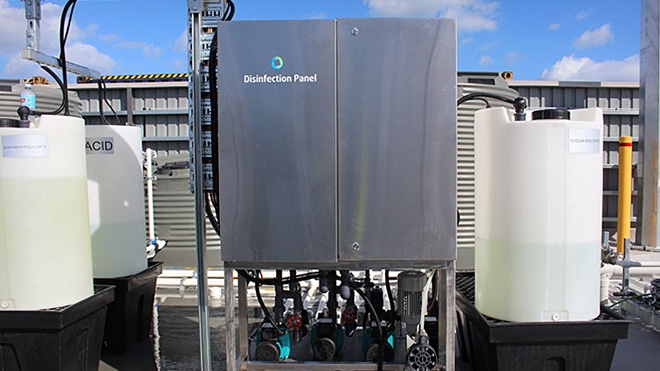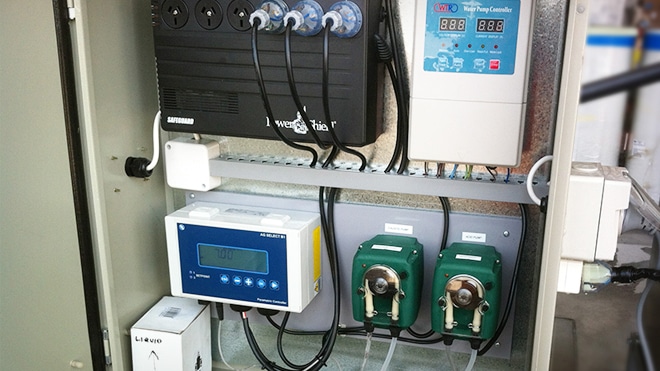How flocculation is used in wastewater treatment
What is flocculation water treatment?
Flocculation is a water treatment process where solids form larger clusters, or flocs, to be removed from water. This process can happen spontaneously, or with the help of chemical agents. It is a common method of stormwater treatment, wastewater treatment, and in the purification of drinking water.
One of the requirements for treated water leaving wastewater plants is the removal of suspended solids. Small solid particles affect the colour of the water and carry impurities into our natural water sources like rivers and the ocean.
Phosphorus content must also be limited in wastewater as a release of phosphorus into rivers promotes algae growth. Uncontrolled releases of phosphorus have been known to cause mass die-offs of fish and other aquatic life.
Some industrial applications generate high levels of phosphorus in their wastewater, which may even require pre-treatment before releasing it to wastewater treatment plants.
Cleanawater offers a wide variety of wastewater equipment and solutions. Find out more here.
How does flocculation work?

Flocculation is based on a chemical process. It involves adding chemicals to the wastewater in sequence and allowing tiny solid particles to collect together in a larger mass called a floc. As a treatment of wastewater, flocculation is carried out in stages.
Stage 1
Suspended solid particles in wastewater are negatively charged. In the first stage of flocculation, a coagulant like aluminium sulphate is added to the wastewater. The positively charged coagulant molecules neutralize the negatively charged solid particles suspended in the water. Neutralising these particles paves the way for them to flocculate together into a larger mass.
Stage 2
The wastewater must be agitated with mixers. High energy mixing is required initially to ensure that the coagulant spreads throughout the water. When flocculation is in progress the mixing energy is reduced to prevent the mass of particles from separating again.
Stage 3
Once floc is beginning to form, a polymer chemical is added to the wastewater. Polymers bridge the flocculant from micro to macro flocculant, meaning that the mass of particles collecting together gets bigger. This chemical also binds the collected mass together so that it does not easily disintegrate even when the water is slightly agitated.
Stage 4
After flocculation is complete, the large solid masses can be removed from the wastewater stream. This is done either through settling where the floc drops to the bottom for removal or through the use of filters which capture the floc in the filter material. Care must be taken when cleaning the filters to ensure that the phosphorus rich floc is contained and treated.
Where is flocculation used in waste water?
Sydney Water is one of the water authorities in the Australian context that uses flocculation for wastewater treatment. Their specific focus is on removing phosphate in the final stages of treatment. Sydney Water uses sand filters for removing the floc from treated wastewater. They backwash the filters every 24 hours to remove the accumulated floc. Backwash water is returned to the primary treatment section of the plant where the floc is removed with other solids.
Phosphate enters our wastewater systems from human and animal waste, detergents and food residues. Food and Beverage plants are therefore prime sources of phosphate in wastewater. Flocculation is a key method for the removal of phosphate from this wastewater, which can be done at the Food and Beverage plant itself before discharging wastewater to the sewer.
Cleanawater wastewater solutions

Cleanawater offers a number of solutions for the wastewater industry to help keep wastewater within specification:
Chemical dosing, in particular pH dosing, is a common method of wastewater treatment. Regulations require treated wastewater to be in a neutral pH range when discharged into the environment.
Our dosing systems can be set-up as in-line or in a recirculating configuration. Both alkaline or acid dosing are available to correct for low or high pH respectively. But dual systems can also be installed where there are fluctuations in pH that cross over from alkaline to acid and vice versa at different times.
Disinfection is a process that kills off remaining bacteria in wastewater streams. Cleanawater uses a chlorine-based system to achieve a high level of disinfection.
This protects workers and the general public from potential health hazards associated with unwanted bacteria in the wastewater system. It is particularly important where water is recycled for use.
Contact Cleanawater
Cleanawater is an Australian company that specialises in wastewater treatment equipment and solutions. Our track record and experience over more than 20 years means that we have the expertise to help you solve your wastewater problems. Our technical experts can help you evaluate your application and advise you on the optimum solutions for your needs.
Contact Cleanawater to talk about your wastewater needs or call our expert team on 1800 353 788 today to arrange a consultation.
Must Read
What to Expect During a Modular Wash Bay Installation
CleanaWater, we make the process of installing a modular wash bay on your site as smooth and straightforward as possible. ...
Read moreThe CleanaWater Team Driving Water Treatment and Sustainability
CleanaWater is powered by a dedicated team of professionals who bring expertise and passion to every project. ...
Read more